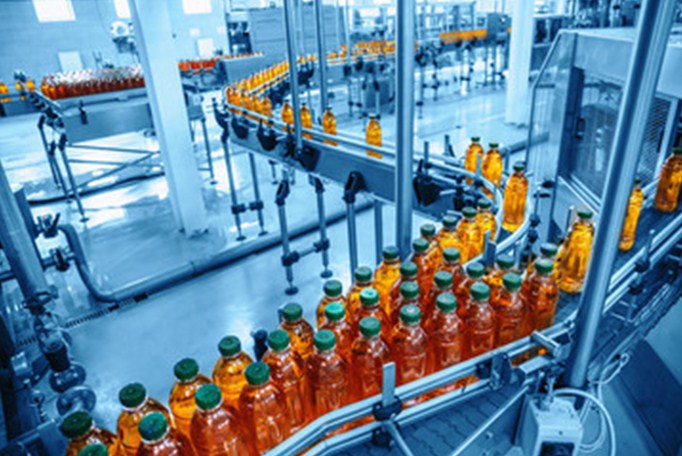- February 9, 2023
- Posted by: Waldon Fenster
- Categories: Food Manufacturing, Manufacturing, Middle market, Private Equity, Sourcing

7 Ways to Increase the Value of Your Food Manufacturing Business
Are you a food manufacturing business owner who is looking to increase the value of their business? Sales leasebacks, equipment financing, facility modifications for efficiency and product sourcing are all strategies that can help in making your business more attractive to potential buyers. But with so many variables impacting the progress of food manufacturers today – from disruptive technology innovations to changing consumer preferences – what should entrepreneurs in the space be watching for? In this article, we’ll explore various trends in the food manufacturing space and seven approaches that business owners can take to maximize their exit multiple.
What’s Ahead for Food Manufacturing?
The food manufacturing industry has experienced immense growth over the past several years. For example, according to Statista, global sales of prepared foods have increased by nearly 8 percent between 2019 and 2023. This momentum is expected to continue into the future; Global Market Insights forecasts that market size will reach around $6 trillion by 2027. As more demand arises for both fresh and prepared foods, entrepreneurs should consider what key areas need to be focused on in order to remain competitive.
Recent macroeconomic challenges also create opportunities: while some businesses may not survive these difficult times, others now have access to cheaper debts or favorable options in terms of operations or expenses. Additionally, opportunities exist in how companies leverage innovating technologies such as automation and robotics that optimize production processes. Finally, rising health concerns among customers will likely drive continued developments in healthier products (such as functional foods) which can prove lucrative if leveraged correctly.
Seven Strategies That Can Help Increase Your Exit Multiple
- Investing in Facility Modifications: Making small improvements throughout your facility can help streamline operations and reduce costs without disrupting productivity significantly. Consider installing more energy efficient systems that can lower energy bills; look into automated solutions such as programmable machines which remove manual labor elements from various processes; consider creating a safety-first culture through improved ergonomics so worker injury rates are reduced; and make sure warehouses are stocked with safety gear like respirator masks during times when an outbreak occurs near you (among other factors). All these changes can help boost revenues while reducing operating costs – two key factors any buyer would be interested in when evaluating a business’s worthiness as an acquisition target.
- Optimizing Equipment Financing: When investing in new equipment it helps ensure that it is done correctly but could also come with a hefty bill at purchase time. To remove this burden from your shoulders it might be beneficial for you to look into financing options like equipment leasing or financing agreements so you don’t have any large expenditures up front but still benefit from having up-to-date machinery outfitted for production needs & specifications set by industry standards & regulations laid down by regulatory bodies such as FDA or EPA etc… Depending on your type of investments needed & performance timeline there might even be certain government programs available which offer financial incentives under grants & subsidies mitigating those operational expenses further boosting bottom line profits helping grow quality output.
- Leveraging Sales Leasebacks: If cash flow is tight due to sluggish orders or limited working capital due to reduced operations or staff cutbacks then opting for sale & leaseback options could provide you sufficient liquidity until normalcy returns back allowing companies bounce back sooner than later especially if they’re already dealing with mounting inventory levels… By signing long-term contract based agreements investors who are keen on diversifying portfolios would likely step in providing liquidity solutions restructuring financial obligations laying them through fixed installments reducing leverage pressures increasing profitability via improved cash flows helping achieve smoother transitions during M&A event.
- Consider Reorganizing Corporate Structure: Similar reorganizational approaches can also prove helpful when conducted properly avoiding any regulatory risks associated specifically within certain industries like finance or healthcare where Anti Money Laundering statutes dictate strict guidelines & follow up robust procedures governing organizational transactions undertaken by corporate entities particularly those handling sensitive data related activities… Therefore understanding laws applicable within respective jurisdictions could help businesses remain compliant without incurring additional liabilities narrowing down possible acquisitions prospects aiding valuations concurrently protecting interests legally too.
- Use Product Sourcing Tactics: Taking advantage of various 3rd party solutions such as import/export services specialized brokers agencies etc offering flexible order terms based on demand fluctuations matching suppliers with buyers efficiently leveraging short term leases rental agreements hiring temporary workers sourced externally etc all contribute towards efficient supply chain management enabling companies forecast resources better generating higher returns margins due harnessing economies rating allowing maximum utilization according seasonal fluctuations while minimizing wastage availing benefits acquired thus saving end users significant amounts during procurement processes.
- Partner Up Through Mergers & Acquisitions: There are other alternative avenues available too such as M&A (merger & acquisition) partnerships forming alliances through joint ventures offering entry barries challenging certain monolithic structures currently holding sway over markets potentially breaking monopolies etc strengthening weaker players promoting competition propelling industry expansion leading towards useful collaborations whereby individual advantages
- Build Customer Loyalty Through Long Term Contracts: Long term contracts with customers helps in creating healthy business relationships by binding them to the organization through mutual trust and cooperation. This can provide a stable platform for expanding operations and market presence as reputed customers are likely to pay better than those who offer lower rates. At the same time, such contracts also reduce the risk of default payments due to their commitment which ultimately help build your company stronger exit values.
Curious on how big your exit could be? We have industry experts on standby to answer your questions. Click Here to Schedule a Call: Opportunity – Deal Exchange
Read the full article here: https://dealexchange.com/7-ways-to-increase-the-value-of-your-food-manufacturing-business/
